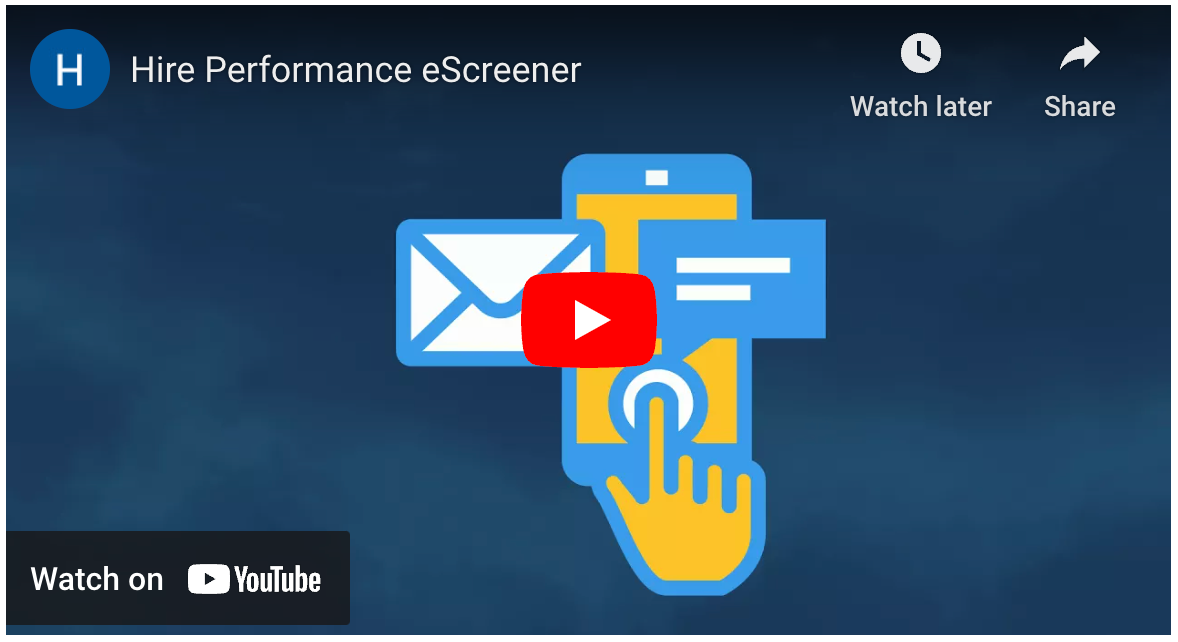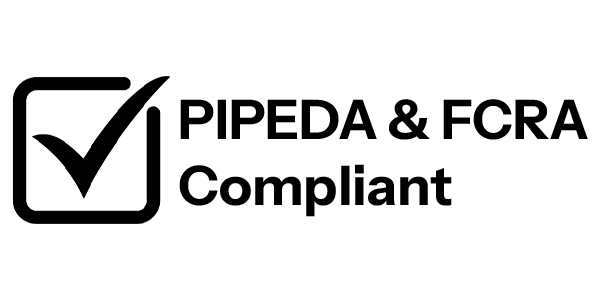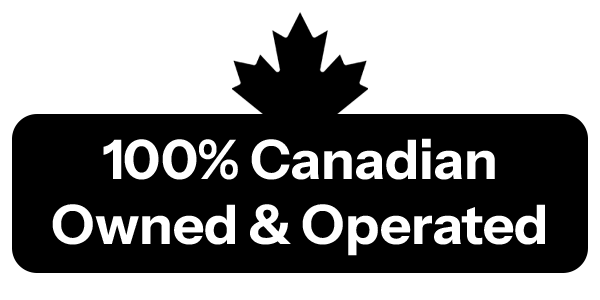Spotting Fake Employment Records for Remote Jobs
Amanda Pinto • October 10, 2025
Remote and hybrid work has opened doors for flexibility, but also for deception. Fake employment records are rising, and relying on surface-level checks like LinkedIn or rushed hiring can leave companies vulnerable.
Employers who tighten verification processes, leverage comprehensive
Employment Verification Background Checks, and proactively spot red flags in digital workspaces can protect their teams and reputations.
Keep reading to learn more about employment verification background checks, the warning signs of fake employment verification, and how Hire Performance offers Canadian and U.S. employment verification services that save time, money, and reduce risk.
5 Key Takeaways
- Fake Records Are on the Rise in Remote Hiring: Remote and hybrid work environments create opportunities for candidates to submit falsified employment documents. These range from inflated job titles to entirely fabricated companies, often supported by convincing letters, pay stubs, or digital references.
- Common Red Flags Employers Should Watch For:
Warning signs include unverifiable companies, personal email addresses used for references, inconsistent dates or job titles across resumes, and organizations that only exist virtually without a physical or operational presence.
- Employer Oversights Make Fraud Easier:
Ten common hiring habits—like relying only on LinkedIn, skipping internal checks, rushing urgent hires, or failing to verify contract roles—make it easier for fake records to slip through. Each oversight weakens the verification process.
- Strengthening Verification Processes Is Key: Employers can reduce risk by requiring official documentation (like tax forms or offer letters), verifying all listed roles regardless of type, documenting each verification step, and standardizing processes for both remote and in-office hires.
- Professional Verification Services Provide Protection: Companies like Hire Performance offer Employment Verification Background Checks across Canada and the U.S., confirming employment history, job titles, and dates while staying compliant with privacy laws. This saves time, reduces hiring risk, and ensures candidates’ claims are legitimate.

What Are Fake Employment Verification Records?
Fake employment verification records are documents, references, or claims that misrepresent a candidate’s work history. They can range from slightly inflated job titles or responsibilities to entirely fabricated companies, dates, or roles. In many cases, candidates create convincing letters, falsified pay stubs, or digital references that appear legitimate but cannot be independently verified.
These fake records are especially common in remote or hybrid work scenarios, where employers don’t meet candidates in person and rely heavily on digital documents or online profiles. The risk isn’t limited to small companies either; any organization that skips thorough pre-employment checks can unknowingly hire someone with falsified experience.
By understanding what fake employment verification records look like, employers can design processes to detect and prevent them, using professional employment verification background checks to confirm details reliably.
Red flags often include:
- Employment at companies that cannot be independently verified
- References using personal email addresses instead of corporate ones
- Inconsistent dates, titles, or responsibilities across resumes and profiles
- Companies that exist only virtually or have been registered recently with no operational footprint
10 Common Employer Habits That Make Fake Records Easier To Slip Through
Sometimes it’s not the candidate, it’s the process. Small oversights or shortcuts in hiring can leave the door open for falsified employment verification. Here are ten common employer habits that increase the risk — and how to tighten your process.
Habit #1: Relying Solely on LinkedIn
LinkedIn profiles are useful for initial screening, but they don’t verify employment dates, job titles, or responsibilities. Candidates can easily exaggerate roles or create convincing company listings. Employers who skip formal verification risk hiring someone whose experience doesn’t match their resume. Always confirm details with official documentation or professional verification services.
Example: A candidate’s LinkedIn shows a five-year tenure as “Operations Director” at a well-known company. A quick glance at LinkedIn suggests senior-level experience. However, employment verification reveals the candidate only worked there for two years in an entry-level operations role.
Habit #2: Skipping Internal Referrals Or Checks
Internal referrals or confirmations with previous managers provide context that external checks alone can’t. When companies overlook this step, they miss an opportunity to validate experience through trusted sources. Even a quick internal check can uncover inconsistencies before a hire is finalized.
Example: A candidate claims to have led a marketing campaign at a previous employer. By skipping internal verification, the hiring team accepts the claim. Later, internal checks reveal the campaign was actually run by another team entirely, and the candidate had minimal involvement.
Habit #3: Fast-Tracking Urgent Hires
Urgent hiring can push HR teams to skip or rush verification steps. While filling roles quickly can keep your business running optimally, skipping proper checks often leads to incomplete or inaccurate vetting. High-pressure hiring should still include a structured verification process to protect your company from risk.
Example: A startup urgently needs a software engineer and hires a candidate without verifying their employment history. Later, they discover the candidate never worked at the tech firm listed on their resume, leaving them open to costly mistakes.
Habit #4: Assuming Small Or Digital-Only Companies Are Legitimate
Candidates sometimes list shell companies or virtual-only employers to cover gaps in employment history. Employers who assume that any listed company is legitimate without verifying its registration, addresses, or business activity may fall victim to fabricated records.
Example: A candidate lists a web company as a former employer, a small digital company with no public record. Verification shows the company is a shell entity created to enhance the resume. Confirming small or virtual employers helps prevent hiring based on false claims.
Habit #5: Ignoring Gaps in Resumes
Employment gaps aren’t inherently suspicious, but unexplained gaps can be a warning of falsified experience. Candidates may invent roles to fill these periods. Investigating gaps and asking for supporting documentation helps prevent fake records from slipping through.
Example: A candidate’s resume shows a two-year gap between positions. On paper, it appears to be a natural career break, but further investigation shows that they created a fabricated role at a “consulting firm” during that period. Without requesting verification or documentation, the employer could have assumed the candidate had continuous, relevant experience, potentially hiring someone under false pretenses.
Habit #6: Not Confirming Titles or Responsibilities
Job titles on resumes can be inflated, and responsibilities may be exaggerated. Failing to confirm a candidate’s actual duties can lead to overestimating their experience or skill set. Professional employment verification confirms the position and scope of work.
Example: A candidate lists “Senior Project Manager” at a mid-sized tech firm, suggesting they led multiple teams and high-value projects. Upon verification, it was revealed that they were, in fact, a project coordinator supporting one team, with limited decision-making authority. Without confirming titles and responsibilities, the employer might have assumed the candidate had leadership experience they did not actually possess.
Habit #7: Trusting Verbal References Without Documentation
Oral references are convenient but not legally binding or independently verifiable. Candidates can provide contacts who may not have worked with them or who give inaccurate information. Written, documented verification through a professional service ensures reliability.
Example: A candidate lists a former manager as a reference, and on a phone call, the manager provides glowing feedback. Later, the employer discovers that the “manager” had left the company years earlier and had no direct oversight of the candidate. If the employer had relied solely on this verbal confirmation, they might have hired someone with falsified experience.
Habit #8: Overlooking Contract or Freelance Roles
Temporary or freelance work is often viewed as a lower priority, but these roles can be crucial to a candidate’s experience. Skipping verification of contract work leaves gaps that could conceal falsified employment records. Check every listed role, regardless of employment type.
Example: A candidate lists a six-month contract as “Marketing Lead” at a small startup. The resume makes the role sound significant, with responsibilities similar to a full-time director. Without verifying the contract, an employer might assume the candidate held a permanent leadership position.
Habit #9: Neglecting to Verify the Location and Business Address
Remote candidates may claim businesses that don’t exist or use virtual addresses. Employers who fail to confirm addresses risk hiring based on inaccurate information. Verifying business locations helps ensure that the employer and role are legitimate.
Example: A candidate lists a tech employer as their previous employer, providing a corporate email and website. On the surface, everything looks legitimate. But a quick search reveals that the company is registered as a virtual office in another province and has no active operations, no employees listed publicly, and no verifiable HR contacts.
Habit #10: Failing to Follow Up on Discrepancies
Inconsistencies in resumes, references, or verification documents can indicate fabrications. Ignoring these red flags or failing to investigate further makes it easier for fake employment records to slip through the cracks. Following up on every discrepancy is a key part of a robust hiring process.
Example: A candidate lists overlapping employment dates for two full-time roles. The hiring team assumes it’s a minor error and moves forward. Verification uncovers that one role was entirely fabricated.
How To Tighten Your Hiring Process
You can prevent falling for fake employment records by refining your own approach:
- Require official documentation: Offer letters, pay stubs, or tax forms help verify claims.
- Use professional verification services: Hire Performance offers Canadian and U.S. pre-employment verification that confirms employment history quickly and accurately.
- Document verification steps: Keeping records of calls, emails, and confirmations helps protect your company in the event of disputes.
- Standardize the process for all hires: Remote or in-office, full-time or contract — apply the same thorough checks.
- Train HR teams to spot red flags: Patterns in resumes, inconsistent references, or unverifiable companies should trigger a deeper investigation.
How Hire Performance Simplifies Verification
Hire Performance offers Employment Verification Background Checks that allow employers to verify employment records quickly and accurately. With access to Canadian and U.S. databases, they can confirm employment history, titles, and dates of service while keeping your hiring process compliant with privacy laws. This reduces reliance on LinkedIn, verbal references, or unverified documents.
Don’t Leave Your Company Exposed; Verify Before You Hire With Hire Performance
Remote and hybrid work will continue to grow, but with it comes the risk of fake employment records. Employers who rely on superficial verification methods are leaving themselves vulnerable.
By tightening internal processes, documenting verification, and leveraging professional services like Hire Performance, you can ensure that candidates are truthful, reduce risk, and streamline your hiring process.
Pre-employment background checks, Canadian criminal record checks, and employment verification are essential tools for modern hiring — especially in a remote-first world.

Industry Leading Technology for Background Checks & Screening
eScreener uses Kount Identity Verification™ technology to verify identity with confidence. This technology cross checks applicant information against Equifax and 3rd party data sources to validate an identity and to determine whether that identity has been reported as misused or associated with potential fraudulent activity. This is done in real time by accessing millions of records, providing instant results in our eScreener.
WHY CHOOSE HIRE PERFORMANCE?
Pre-Employment Screening Benefits
Our industry leading expertise and cutting edge technology help organizations detect potential risks such as resume fraud, criminal convictions, and past terminations.












